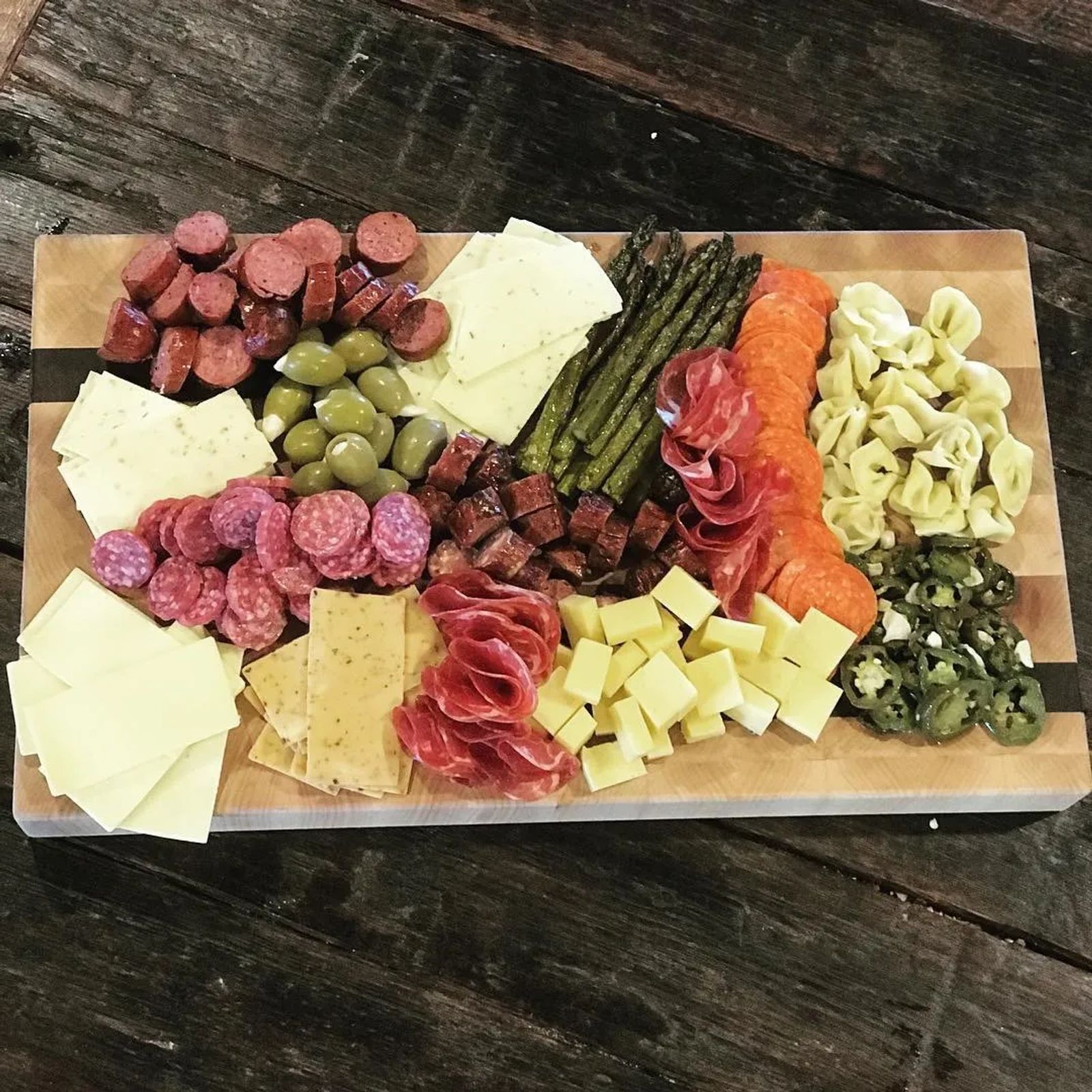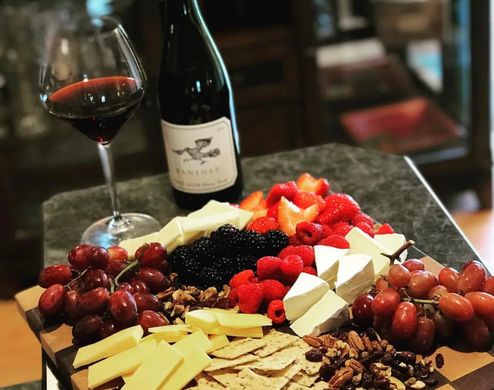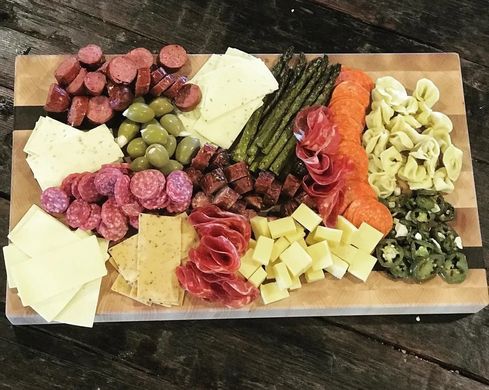
A Creative, Colorful Charcuterie Board Dazzles in Any Season
October 23, 2019 | by ashlynn reynolds-dyk
Fall is upon us which means many things—one is that we may be squeezing in some final outdoor gatherings requiring a food item or planning for upcoming holiday parties. With those fall gatherings, it can be easy to fall into the typical fall chili and cinnamon rolls routine (not that I have anything against either of these!). You can change it up, however, with a charcuterie (pronounced "shahr-ku-tuh-ree") board.
These are sure to impress any crowd and let you employ some of your creative and artistic skills without actually needing a whole lot of skill (can you lift things and arrange them on a serving dish?). Charcuterie boards come in many shapes, sizes, colors, and even flavors! In addition to offering you the opportunity to be creative, these boards are also forgiving, allowing flexibility with regard to what you include in them.
Originally, charcuterie referred only to a variety of cured Italian meats, but today, most people include with their charcuterie boards a combination of cured meats in addition to cheese, fruits, olives, vegetables, crackers and toasted bread, dips and spreads, and/or nuts.
- First, the serving board: A natural wood cutting board works great for serving charcuterie—they enhance the look and overall visual/aesthetics of the item. Any serving tray will work, however.
- Second, choose a variety (two or more) of cured meats: Sausage, salami, Prosciutto, oh my! Salami is not just salami—it comes in about a zillion different flavors and types as do sausage and Prosciutto. Any combination of these—usually two or more with different flavors and appearances—works well.
- Then, choose a variety (two or more) of cheeses: You can use goat cheese, blue cheese, swiss, cheddar, and a whole variety of Italian cheese like Pecorino Romano or parmesan. If you come across a specialty cheese available only this time of year, include it! To prepare your cheese for the board, they can be sliced, cut into bite size squares, or whatever you like—many ways to do it! I suggest thinking about color variety and flavor combo when making your selections.
- Next, choose olives or pickled vegetables: The beauty of olives is that there are so many varieties and just about any type of olive works (green, red, Greek, stuffed, etc.). You can pair these with something like pickled asparagus or even jalapeños.
- Now, choose fresh fruits: Grapes are definitely my go-to for charcuterie, but if I have planned far enough ahead and have some fresh raspberries, blackberries, or strawberries, I like to add them to mix up the flavor and color palates. Dried fruits like cranberries, tangerines, or banana chips can also be good. The fruits really help give some variety to the saltier meats, cheeses, and pickled veggies.
- If desired, choose crackers and/or toasted bread: You can purchase a baguette to cut, flavor, and toast on your own or you might choose pre-toasted breads and/or crackers. Pita chips can work, too! Again, the options here are plentiful. The more variety, the better.
- If offering crackers or bread, consider adding some dips or spreads: You might include one or two or three or however many of these you like! I would base this on the size of your crowd and the number of items you are including that people might like to dip (e.g. some veggies lend themselves well to dips and spreads). If including toasted bread, you might include some bruschetta or hummus. I tend toward more Italian or Mediterranean style dips and spreads.
- Finally, add some nuts: You might sprinkle cashews, pecans, or a fairly mild nut as a final touch to top off your charcuterie board giving it the perfect final touch.
Oh, and did I mention charcuterie boards pair well with wine?







